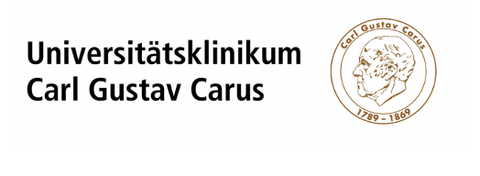autoLAMPe (autonomes Trinkwassermonitoring mittels Loop mediated amplification zum Echtzeit-Monitoring )
Die aktuelle Trinkwasserverordnung (TrinkwV Stand Juli 2023) sieht ein verpflichtendes Risikomanagement für Betreiber von Trinkwasserversorgungsanlagen ab 2029 vor. Dieses umfasst auch den neu in die Trinkwasserverordnung aufgenommenen Überwachungs-Parameter "somatische Coliphagen", der als Indikatorparameter zur Verifizierung der Entfernungswirksamkeit für kleine Partikel im Größenbereich von Viren in der Trinkwasseraufbereitung dient. Im kalten Trinkwasser zunehmend als problematisch erkannt wurde aus hygienisch-fachlicher Sicht inzwischen zudem Pseudomonas aeruginosa. Entgegen dem Stellenwert in der novellierten TrinkwV, nach welcher nur bei Wasser zur Abfüllung in geschlossene Behältnisse auf den Erreger geprüft werden muss, handelt es sich um einen kritischen Pathogenen im medizinischen Umfeld.
Nach TrinkwV erfolgt der Nachweis von somatischen Coliphagen, sowie P. aeruginosa mittels kulturbasiertem Nachweis. Diese Methodik ist personalaufwendig und die Analyse selbst benötigt Zeit zur der Inkubation der Zielorganismen. Um schnell und einfach einen Hinweis auf eine Belastung des Trinkwassers zu erhalten, sind solche aufwändigen Nachweisverfahren ungeeignet und zu langsam.
Viele zentrale und dezentrale Wasserversorger wünschen sich daher ein Schnellverfahren mit wenig eigenem Arbeitsaufwand, das in kurzen Zeitabständen (beispielsweise täglich) mit einem zuverlässigen, aber schnellen und aussagekräftigen Analyse-Verfahren eine mikrobielle Belastung des Wassers nachweisen und optimalerweise auch direkt dokumentieren kann. Ein solches Verfahren gibt es aktuell nicht auf dem Markt.
Die Projektpartner CARELA® GmbH, das Institut für Medizinische Mikrobiologie und Virologie des Universitätsklinikum Dresden (TUD MiVi) und das Institut für Bioverfahrenstechnik der TU Dresden (TUD BioV) planen im vorliegenden Projekt die Entwicklung eines automatisierten Überwachungssystems für Trinkwasser zur Detektion von somatischen Coliphagen und P. aeruginosa. Als Nachweismethode soll aufgrund der hohen Spezifizität und Geschwindigkeit bis zur Vorlage eines Untersuchungsbefundes die Amplifikation von spezies-spezifischen genetischen Zielsequenzen im LAMP Verfahren zum Einsatz kommen. Mit diesem System soll ein schnelles, unkompliziertes, kosteneffizientes und automatisiertes Monitoring der Belastung des Trinkwassers möglich sein. Damit wäre ein Nachweis dieser Indikatorparameter ohne zeitintensive Laboranalytik verfügbar und dem Betreiber vor Ort ein Warnsystem ermöglicht, um frühzeitig Maßnahmen zu ergreifen. Das System ersetzt rechtlich den Befund des akkreditierten Labors damit nicht, sondern dient als Messglied im unternehmensinternen, für zentrale Wasserversorger verpflichtenden Risikomanagement.
Projektfinanzierung:
ZIM AIF
Projektleiter:
 © Mann
© Mann
Wissenschaftlicher Mitarbeiter
NameDipl.-Ing. Christoph Otto
SmartLab-Systeme, Laborautomation
Eine verschlüsselte E-Mail über das SecureMail-Portal versenden (nur für TUD-externe Personen).
Kooperationspartner:
Institut für Medizinische Mikrobiologie und Virologie (Universitätsklinikum Carl-Gustav carus)
Projektlaufzeit:
01.08.2024-31.01.2027


